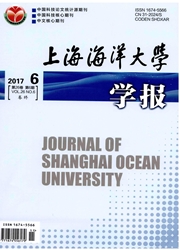

 中文摘要:
中文摘要:
栖息地适宜性指数(habitat suitability index,HSI)于20世纪80年代提出之后,在渔业资源开发、管理、评估及保护等领域中得到广泛应用,已成为渔业科学研究的重要手段之一。简要概述了国内外HSI研究现状、理论和方法,以及应用现状和存在问题。并概括提出HSI研究和应用过程中,要充分考虑的问题有:(1)充分了解研究对象生活史过程及其生物学特性和所处的环境;(2)针对不同生长阶段和外部环境,选择合适的环境因子;(3)开展数据源合适时空标准的研究,建立环境因子等数据的规范;(4)根据历史资料和专家知识赋予各因子的合适权重;(5)针对不同目标(保护区、中心渔场、生物量估算等),来选择备选的HSI模型;(6)通过各种模型的比较分析,选择合适的HSI模型;(7)利用实测数据和最新资料,对模型进行不断改进与修正,以提高模型的精度。
 英文摘要:
英文摘要:
Habitat suitability index(HSI) has been widely used in fishery resources exploitation,management,assessment and protection since it was found in the early 1980s,and it has become one of the most important tools in fishery science research.In this article,outlining the studies in the world,the theory and methods of HSI,and the advance applications and exist problems have been summarized.Some advice should be considered sufficiently in the application of HSI,i.e.,(1) study on target species' life history and biological characteristics and its habitats;(2) suitable environment factors should be selected according to different growth stages;(3) research on spatial-tempral scales of data and rule set on data;(4) selecting logical weights upon different factors based on literature and expert knowledge;(5) selecting preparatory HSI models be propitious to the various goals,such as protection area,fishing ground and biomass evaluation;(6) selecting suitable HSI models by comparison of models and related analysis;(7) modifying models using in-situ or recent data in order to improve precision of model.
 同期刊论文项目
同期刊论文项目
 同项目期刊论文
同项目期刊论文
 期刊信息
期刊信息
